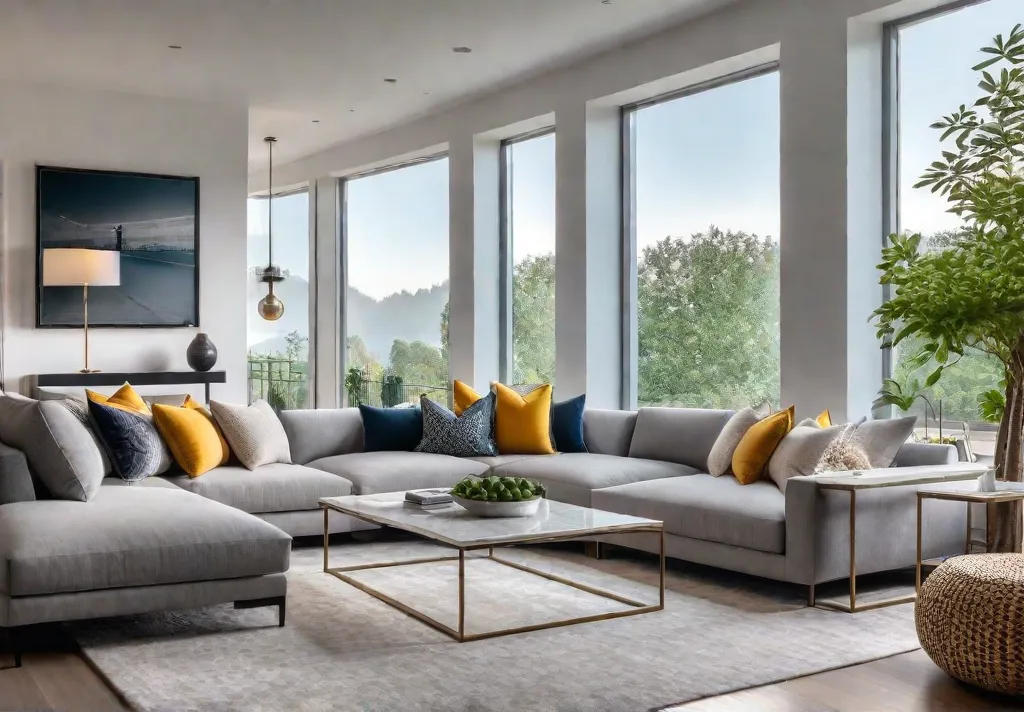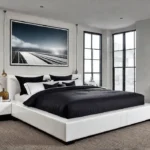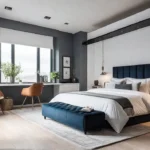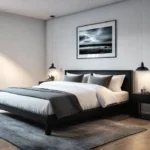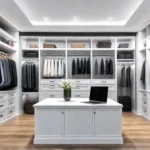Imagine stepping into a living room that instantly gives you warmth and comfort. A space where the furniture arrangement invites you to sink into plush cushions, share stories with loved ones, and let the stresses of the day melt away. This is the power of thoughtful living room design – transforming a mere room into a cozy sanctuary.
In today’s fast-paced world, our living rooms have become more than just spaces for relaxation; they’re the heartbeat of our homes, where we entertain guests, bond with family, and recharge our spirits. As such, the layout of this cherished space deserves careful consideration. From fostering intimate conversations to striking the perfect balance between form and function, how we arrange our furniture can profoundly impact the ambiance and livability of our living rooms.
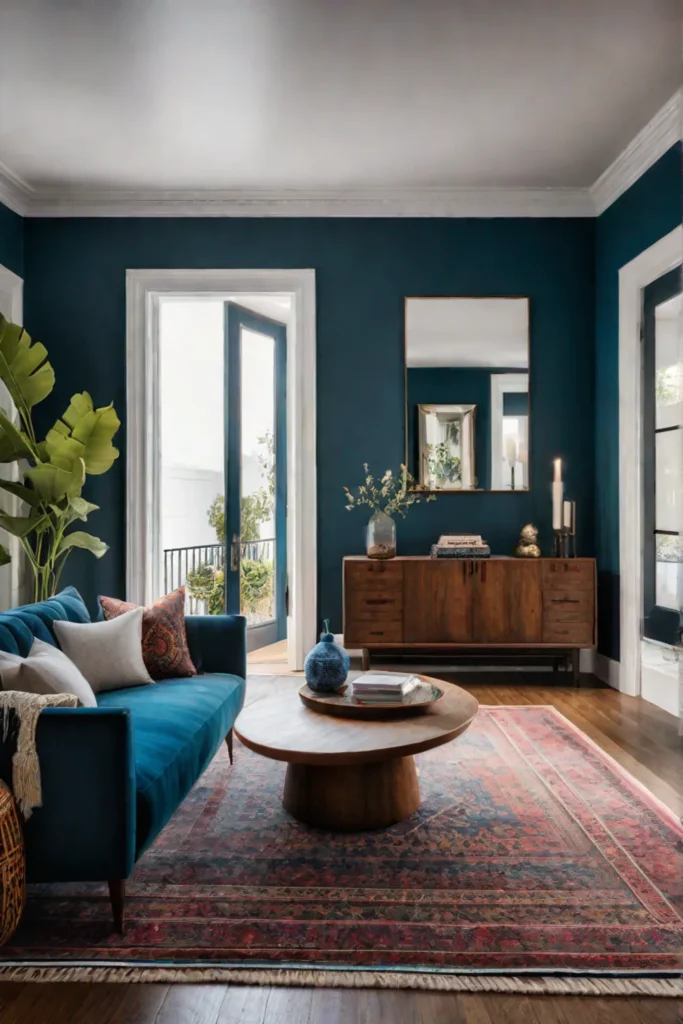
So, let’s explore five modern furniture layout ideas that will help you create a stylish and inviting living space that truly reflects your taste and lifestyle.
Creating Conversation Areas: The Art of Intimate Gatherings
Few elements are as essential in living room design as a well-crafted conversation area. These cozy seating arrangements facilitate lively discussions and foster a sense of togetherness and connection. Imagine hosting an intimate gathering where friends and family can comfortably engage in heartfelt conversations, share laughter, and create cherished memories.
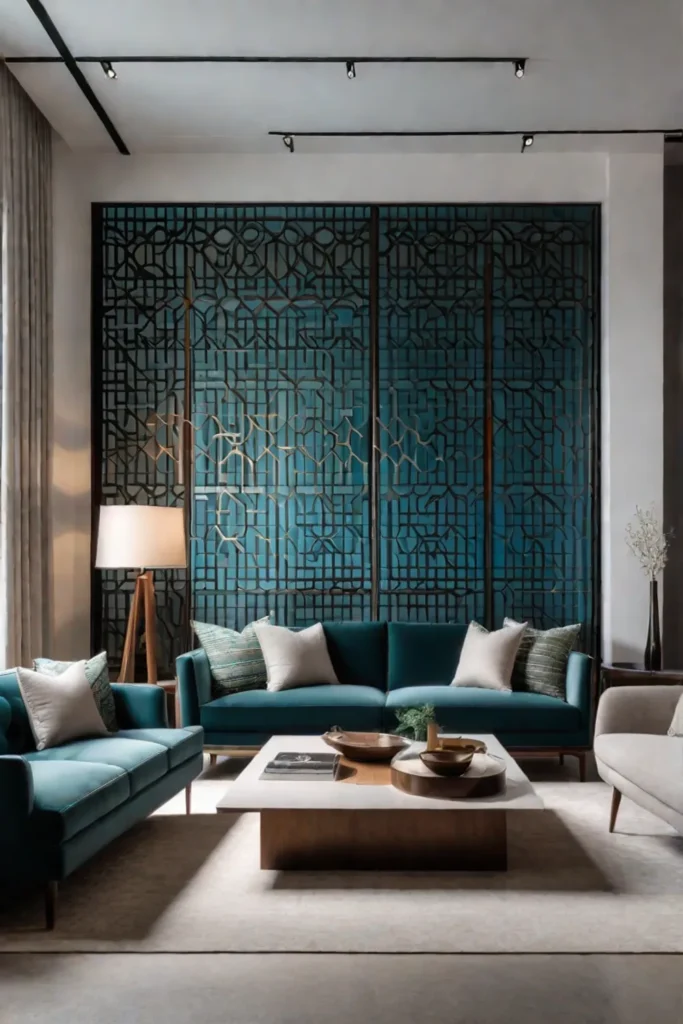
To achieve this inviting atmosphere, consider positioning a loveseat or a pair of armchairs facing each other, with a coffee table between them. This classic arrangement encourages natural eye contact and ensures no one feels left out of the conversation. Alternatively, a U-shaped seating configuration with a sofa and two chairs can create a more inclusive setting, perfect for larger groups.
For those seeking a touch of versatility, swivel chairs can be a game-changer. These clever pieces allow guests to pivot and engage with conversational clusters, fostering a dynamic and fluid social experience.
Studies have shown that well-designed conversation areas can increase social engagement and reduce feelings of isolation, underscoring the profound impact that thoughtful furniture arrangements can have on our emotional well-being. And let’s not forget the practical benefits – the optimal distance between seating in a conversation area is 3-8 feet, ensuring that voices can be heard clearly without straining.
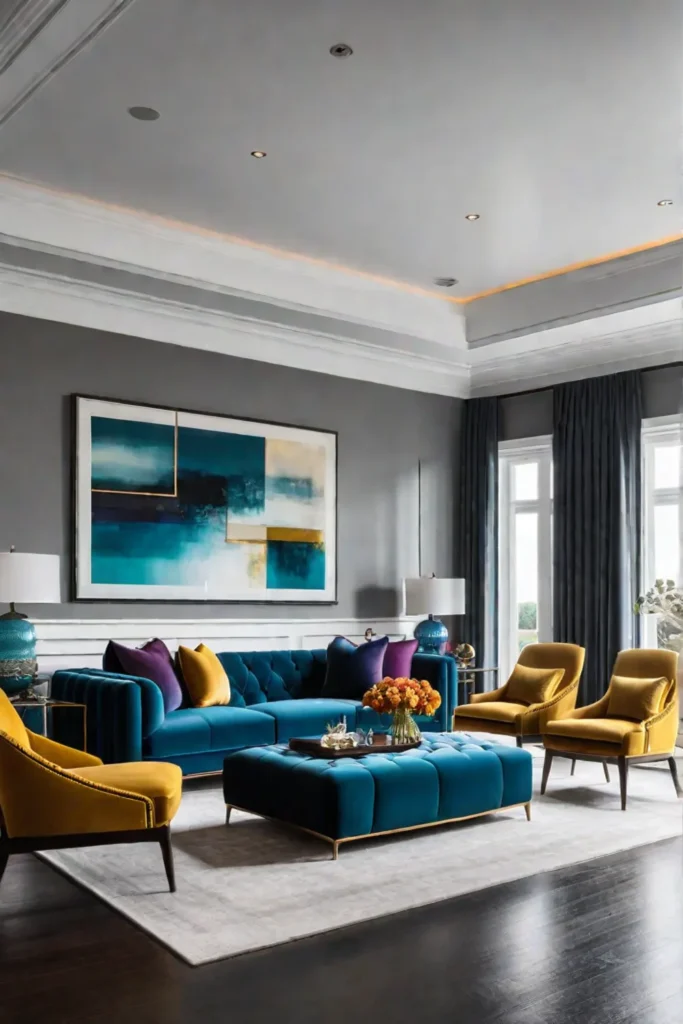
Strategically placing seating groups creates a welcoming atmosphere and encourages meaningful connections and cherished moments with loved ones.
Defining Focal Points: The Art of Visual Harmony
In interior design, focal points are akin to anchors that ground a space and guide the eye through a harmonious visual journey. In a living room, these focal points can take many forms—a stunning fireplace, captivating artwork, or even a breathtaking view through a large window.
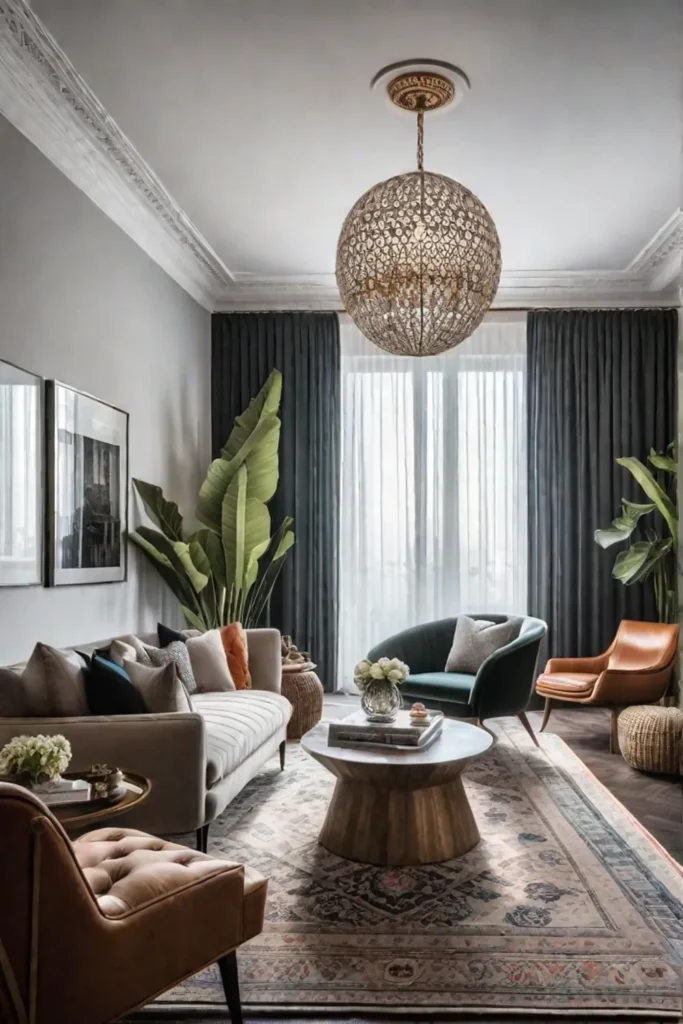
Regardless of the focal point’s nature, the furniture layout accentuates and draws attention to these design elements. Imagine arranging your seating to frame a cozy fireplace, creating a natural gathering spot that invites you to cozy up with a good book or share stories over a crackling fire.
Alternatively, you could position a statement piece, such as a luxurious sectional or a striking accent chair, as the focal point. This bold move adds visual interest and creates a natural conversation starter, allowing guests to admire and appreciate the craftsmanship and design.
To further enhance the impact of your focal point, consider incorporating rugs, lighting, and other decor elements that draw the eye toward the intended area. A well-placed area rug can define the seating arrangement, while strategically positioned lamps or sconces cast a warm, inviting glow on your prized design feature.
Research has shown that well-defined focal points can increase the perceived size of a room and create a sense of visual harmony, making the space feel more cohesive and inviting. And let’s not forget the power of contrast – the human eye is naturally drawn to areas of high visual interest, making a well-executed focal point all the more captivating.
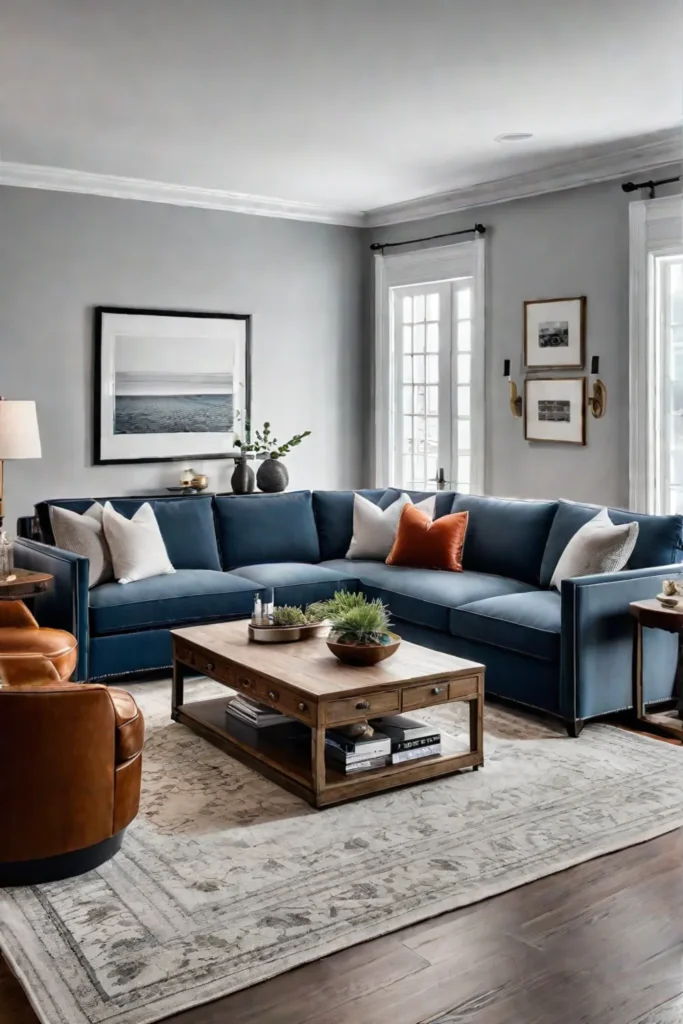
By carefully considering the placement of your furniture and complementary decor elements, you can create a living room that showcases your style and offers a visually balanced and cohesive design experience.
Optimizing Traffic Flow: The Art of Effortless Movement
While aesthetics are important in living room design, functionality should never be overlooked. A well-planned furniture layout can ensure smooth traffic flow, creating a sense of openness and ease of movement that enhances the overall comfort and usability of the space.
Imagine hosting a lively gathering where guests can mingle and move freely without the frustration of navigating awkwardly placed furniture or feeling cramped in tight spaces. By positioning your pieces strategically, you can create clear pathways that allow for effortless circulation, ensuring that your living room is as functional as it is beautiful.

One key consideration is to avoid placing large pieces, such as sofas or coffee tables, in the middle of high-traffic areas. Instead, consider arranging them along the walls or in designated conversation zones, leaving ample space for foot traffic to flow naturally.
Flexible furniture like ottomans or small side tables can be a lifesaver for those with limited square footage. These versatile pieces can be easily moved or rearranged to create temporary walkways, adapting to the moment’s needs while maintaining a sense of openness.
Studies have shown poor traffic flow can lead to frustration and decreased overall satisfaction with a living space. But fear not—by prioritizing clear pathways and avoiding obstructions, you can significantly improve the overall functionality of your living room, creating a space that looks beautiful and feels effortlessly navigable.
Let’s not forget the practical benefits of optimal traffic flow—the recommended width for a main walkway in a living room is 36-48 inches, ensuring comfortable passage for all your guests, regardless of their mobility needs.

By thoughtfully considering the flow of movement in your living room, you can create a space that seamlessly blends form and function, inviting relaxation and effortless navigation.
Balancing Scale and Proportion: The Art of Visual Harmony
In interior design, scale and proportion are the unsung heroes that can make or break a space’s overall aesthetic. A living room that strikes the right balance between these two elements exudes a sense of visual harmony and comfort, creating an inviting atmosphere that beckons you to linger and unwind.

Imagine a space where the furniture pieces are perfectly scaled to the room’s dimensions, creating balance and cohesion. A large sectional sofa, for instance, could be paired with appropriately sized side tables and a coffee table, ensuring that no single piece overwhelms or dwarfs the others.
Consider incorporating a striking accent piece, like a luxurious armchair or a sculptural coffee table, for those seeking to make a bold statement. However, balance these statement-makers with smaller, complementary pieces to maintain a sense of equilibrium and prevent the space from feeling cluttered or overwhelming.
Furniture with clean lines and simple silhouettes can also contribute to a visually balanced living room. These pieces tend to create a sense of calm and order, allowing the eye to rest and appreciate the overall composition of the space.
Research has shown that rooms with well-proportioned furniture and decor are perceived as more inviting and relaxing, underscoring the importance of achieving the right balance. And let’s not forget the timeless principles of design—the golden ratio, a mathematical concept used for centuries to create visually pleasing compositions, can be a valuable tool in achieving a harmonious living room layout.

By carefully considering the scale and proportion of your furniture pieces, you can create a living space that exudes visual balance and comfort, inviting you to unwind and truly embrace the joys of relaxation.
Enhancing Focal Points with Furniture: The Art of Accentuation
In living room design, focal points are the stars of the show – the design elements that demand attention and set the tone for the entire space. But what truly elevates these focal points is the strategic placement of furniture, which can act as a powerful tool for accentuation and emphasis.
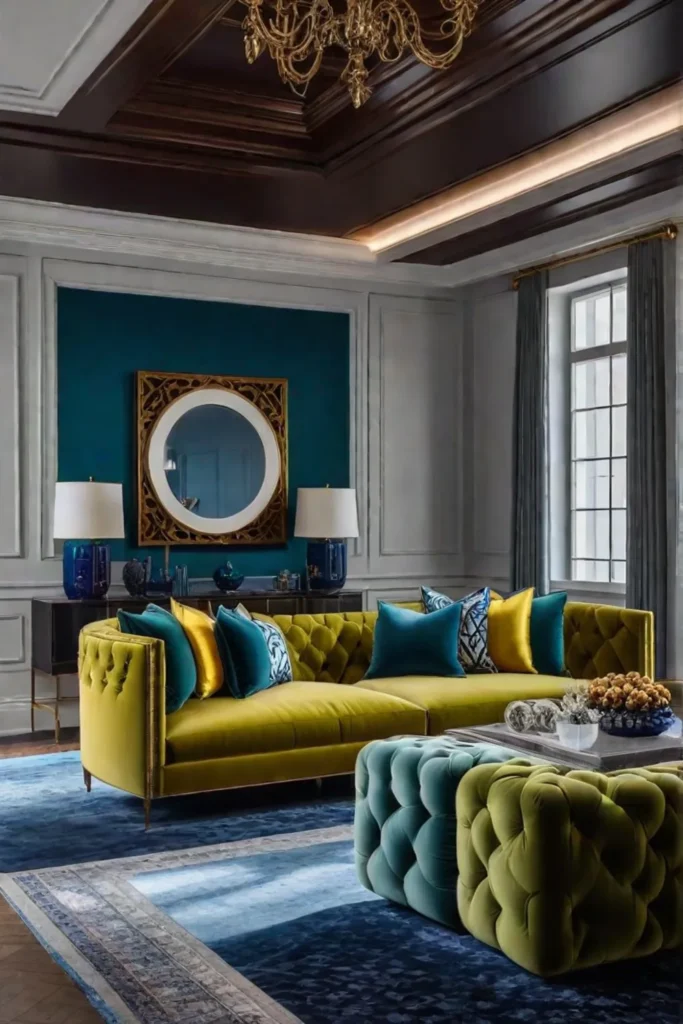
Imagine arranging your seating to frame a stunning floor-to-ceiling window, creating a natural gathering spot that invites you to bask in the beauty of the outdoors. Or perhaps you could position a statement coffee table, with its unique sculptural form or intricate woodwork, as the centerpiece of your living room, allowing it to take center stage and captivate your guests.
But the magic doesn’t stop there. By carefully considering the principles of symmetry and visual balance, you can use furniture to create a harmonious composition around your focal point. For instance, a pair of matching accent chairs could flank a grand fireplace, creating balance and drawing the eye toward the flickering flames.
Research has shown that well-designed focal points can increase a living space’s perceived value and overall appeal, making them a worthwhile investment for any homeowner or design enthusiast. When highlighting these key design features, furniture placement is one of the most effective tools at your disposal. It guides the viewer’s attention and creates a cohesive, visually striking narrative.
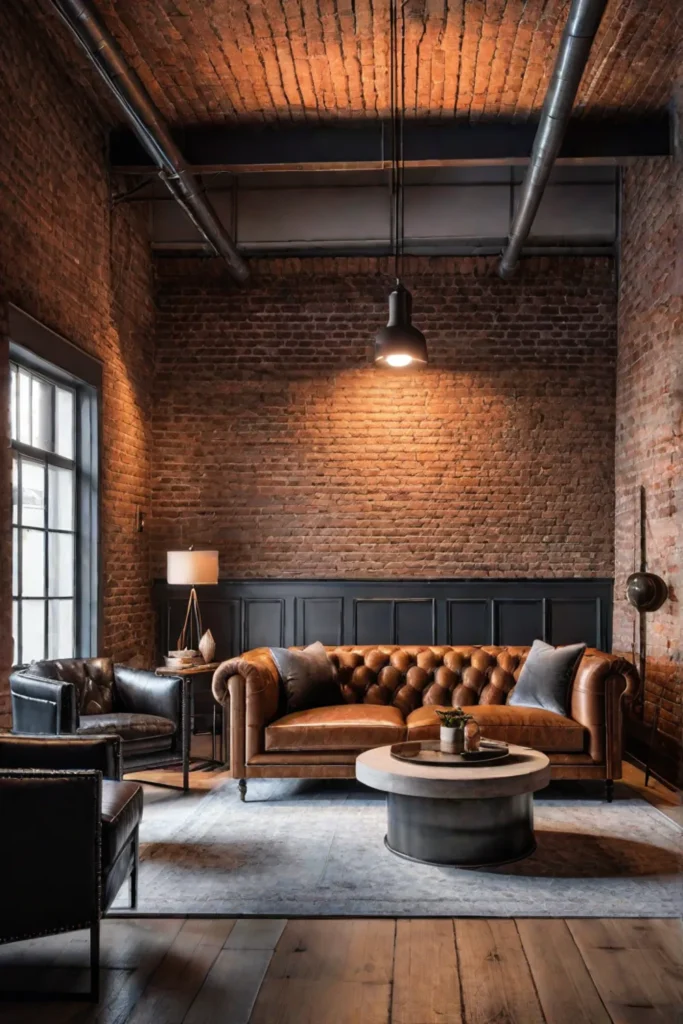
So, remember the power of furniture arrangement, whether you’re showcasing a beloved piece of artwork, a stunning architectural feature, or a breathtaking view. By strategically positioning your pieces, you can create a living room that celebrates your style and showcases the most captivating elements of your space.
Conclusion
In the ever-evolving world of interior design, the living room remains a sanctuary – a space where we gather to connect, unwind, and create cherished memories. By embracing the principles of thoughtful furniture layout, we can elevate this cherished space to new heights, transforming it into a true reflection of our styles and lifestyles.
Whether you seek to foster intimate conversations, define captivating focal points, or achieve a harmonious balance of scale and proportion, the careful arrangement of your furniture can profoundly impact the ambiance and livability of your living room.

So, let this be your invitation to embrace the art of living room design. Unleash your creativity, and dare to craft a space that looks beautiful and feels like a warm embrace, welcoming you to slow down, savor the moment, and truly make yourself at home.
After all, the true essence of a cozy living room lies not in the individual pieces but in the harmonious interplay between them – a symphony of design that invites you to relax, connect, and celebrate the simple joys of life.
